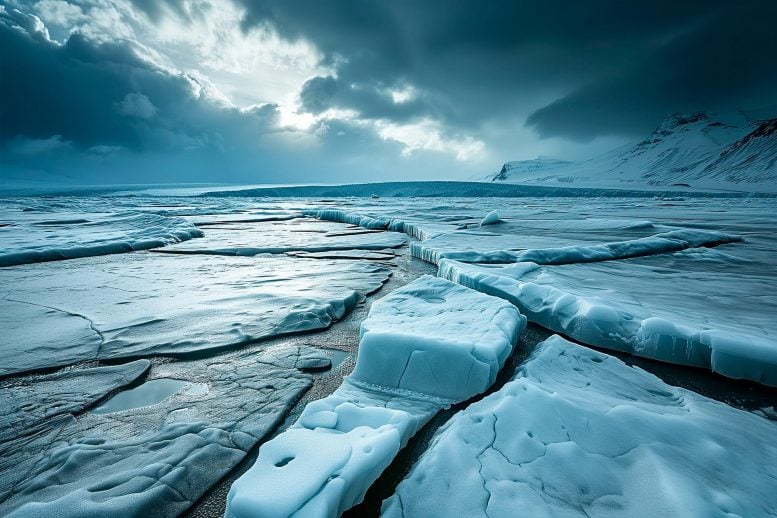
A new study suggests that stratospheric aerosol injection (SAI) could effectively reduce ice sheet melting caused by climate change. However, this geoengineering approach is contentious, focusing on symptoms rather than the underlying causes of global warming, with uncertain impacts on natural systems. Credit: SciTechDaily.com
Simulations indicate that injecting aerosols into the stratosphere could mitigate the melting of ice sheets caused by global warming.
One of the many effects of global warming is sea-level rise due to the melting and retreat of the Earth’s ice sheets and glaciers as well as other sources. As the sea level rises, large areas of densely populated coastal land could ultimately become uninhabitable without extensive coastal modification. In order to stave off this possibility, carbon emissions need to reach net negative, a state that is hard to achieve under current circumstances.
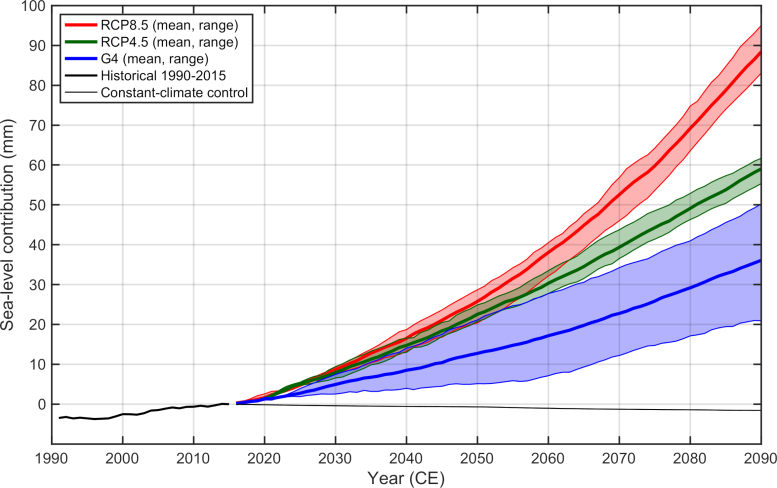
Simulated mass loss of the Greenland ice sheet from 1990 until 2090, expressed as a sea-level contribution, under different conditions:RCP8.5 (red; worst-case scenario, unabated warming), RCP4.5 (green; intermediate scenario, possibly achievable under current conditions), and GeoMIP G4 (blue; RCP4.5 plus the injection of 5 million metric tons of sulfur dioxide per year into the stratosphere during 2020–2070). Credit: Ralf Greve
There are many proposals to drastically mitigate the effects of climate change, and the most expansive of these involve interventions that will alter aspects of the entire globe—the geoengineering techniques. While they have some promise, we do not understand enough about natural cycles to fully assess how beneficial such interventions will be.
Stratospheric Aerosol Injection: A Potential Solution
An international team of researchers led by Professor John C. Moore, at the University of Lapland, Rovaniemi, Finland, and Professor Ralf Greve, at the Institute of Low Temperature Sciences, Hokkaido University, has used simulations to examine the potential effects of a geoengineering technique called stratospheric aerosol injection on ice sheet melting. Their findings were published in the Journal of Geophysical Research: Earth Surface.
“Stratospheric aerosol injection, or SAI, would artificially introduce aerosols into the stratosphere by aircraft or high-altitude balloons to create a cooling effect via global dimming and increased albedo—the degree to which Earth reflects sunlight,” Moore explains.
Study Findings and Implications
Moore, Greve and colleagues used the SICOPOLIS model to simulate the changes in the Greenland Ice Sheet for the period 1990–2090 under three different scenarios: RCP8.5 (worst-case scenario, unabated warming); RCP4.5 (intermediate scenario, possibly achievable under current conditions); and GeoMIP G4 (RCP4.5 plus the injection of 5 million metric tons of sulfur dioxide per year into the stratosphere during 2020–2070).
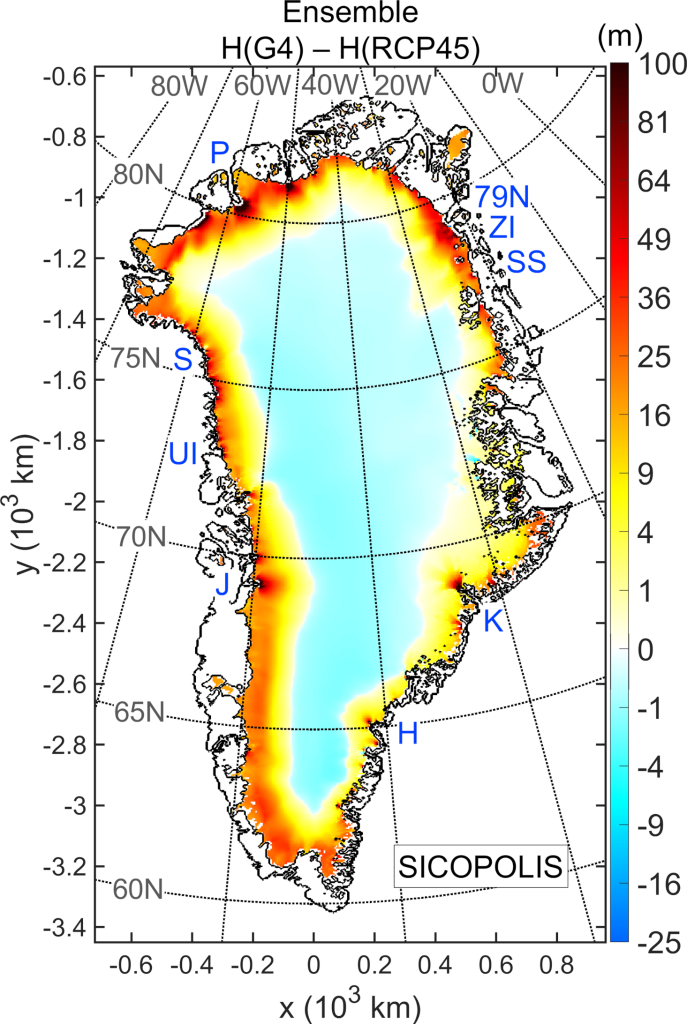
Results of the SICOPOLIS simulations comparing the change of the Greenland Ice Sheet between GeoMIP G4 and RCP4.5: ice thickness (H). Stratospheric aerosol injection of sulfur dioxide will have the greatest protective effect on the margins (which remain thicker; yellow and red) of the ice sheet. Credit: John C. Moore, Ralf Greve et al. Journal of Geophysical Research: Earth Surface. November 27, 2023
The simulations showed that SAI of sulfur dioxide would have a clear protective effect on the Greenland Ice Sheet. Under RCP8.5, there would be ice loss equivalent to approximately 90 mm sea-level rise; under RCP4.5, ice loss would be approximately 60.6 mm sea-level rise; but under GeoMIP G4, ice loss would be limited to approximately just 37.6 mm sea-level rise. When these scenarios were tested with a different model, Elmer/Ice, the results were similar. The margins of the ice sheet would benefit the most under GeoMIP G4.
“While this study shows that SAI could contribute to the protection of the Greenland Ice Sheet, and hence, potentially, all other ice cover on Earth, geoengineering is a highly contentious topic,” Greve concludes. “The biggest issue is that it addresses only the symptoms of global warming, not the root causes—and may even delay the changes required to address the causes. Furthermore, due to the immense complexity of the natural systems on Earth, it is impossible to predict exactly what positive and negative outcomes could result.”
Reference: “Reduced Ice Loss From Greenland Under Stratospheric Aerosol Injection” by John C. Moore, Ralf Greve, Chao Yue, Thomas Zwinger, Fabien Gillet-Chaulet and Liyun Zhao, 27 November 2023, Journal of Geophysical Research Earth Surface.
DOI: 10.1029/2023JF007112
The study was funded by the National Key Research and Development Program of China, the State Key Laboratory of Earth Surface Processes and Resource Ecology, the Finnish Academy COLD consortium, the Japan Society for the Promotion of Science, the Ministry of Education, Culture, Sports, Science and Technology of Japan, and Hokkaido University.

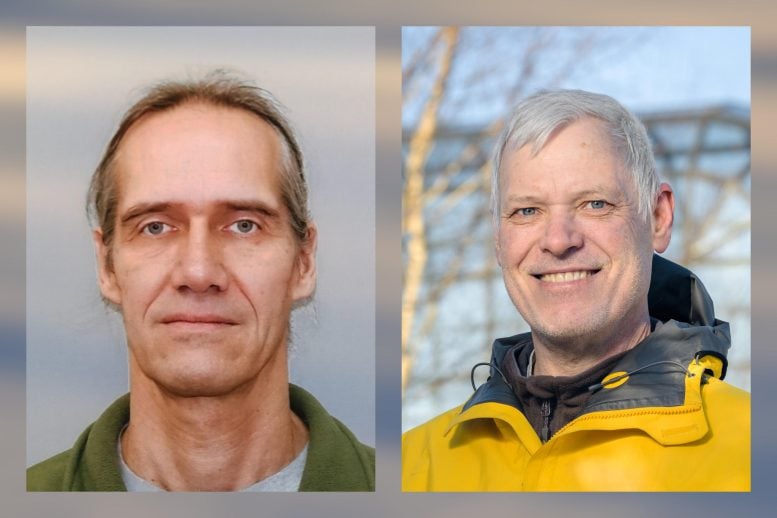



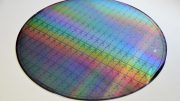


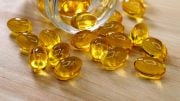
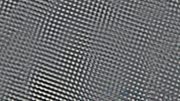
So … encourage transatlantic flights over Greenland?
Maybe elan musk can launch from there he is injecting lots of bad stuff into the stratosphere with his verticle landings. Twice or more times the fuel than most launches. Perhaps the cure is twicr as bad as the disease. Your curioisity for fixing this seems unreasonable. You cant stop volcanoes or forest fires or bombs exploding or nuclear plant releases or apparently space launches. Humans do not want to stop all their fun things they just want a cure or remedy and just keep on with what they are doing. Kinda like health care. Wr dont really want to cure because we wont have anything to fix. Please stop injecting things into the earth or its atmosphere or its nieghbouring planets. As we will all pay for your longevity as a scientist as well as animal and plant and all life. I hope when you get to mars you willtry to change everything there as well. Just like the movie. So do scientists fashion there life and studies from the effin movies over time. Certainly seems so. Always effin with stuff. The earth is great you cannot improve what the great creator made nor can you replicate it. What a effin buffoon idea to inject anything in any part of out atmosphere. Your effin fired.